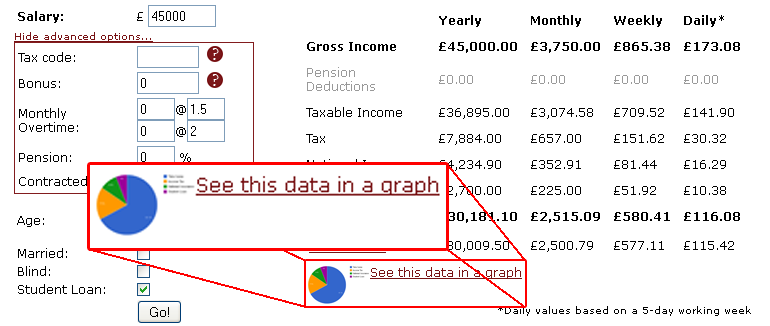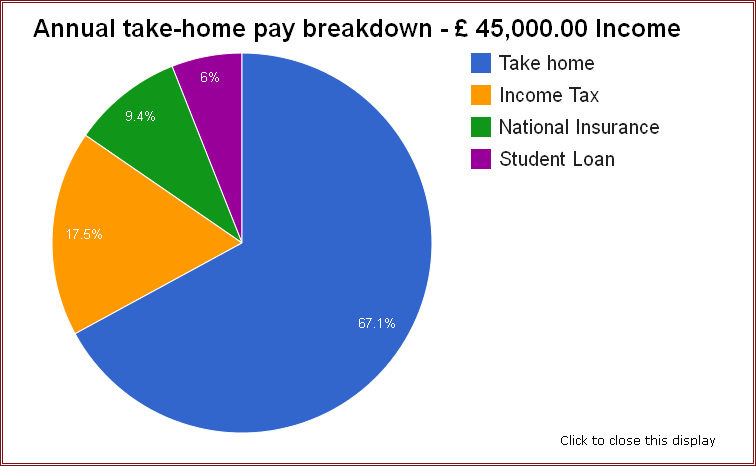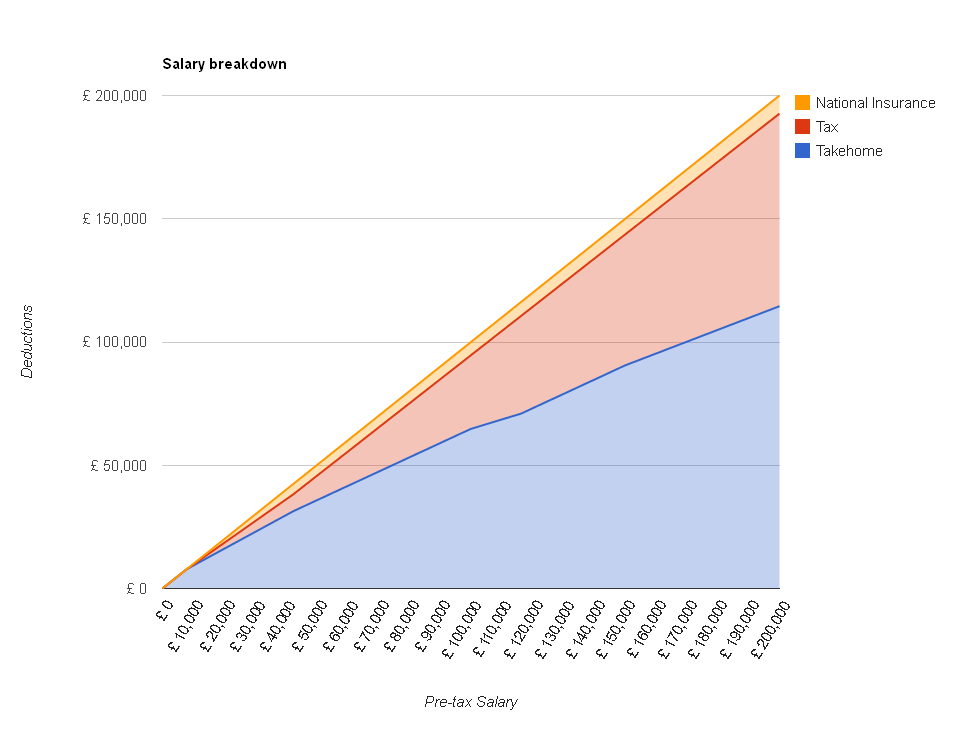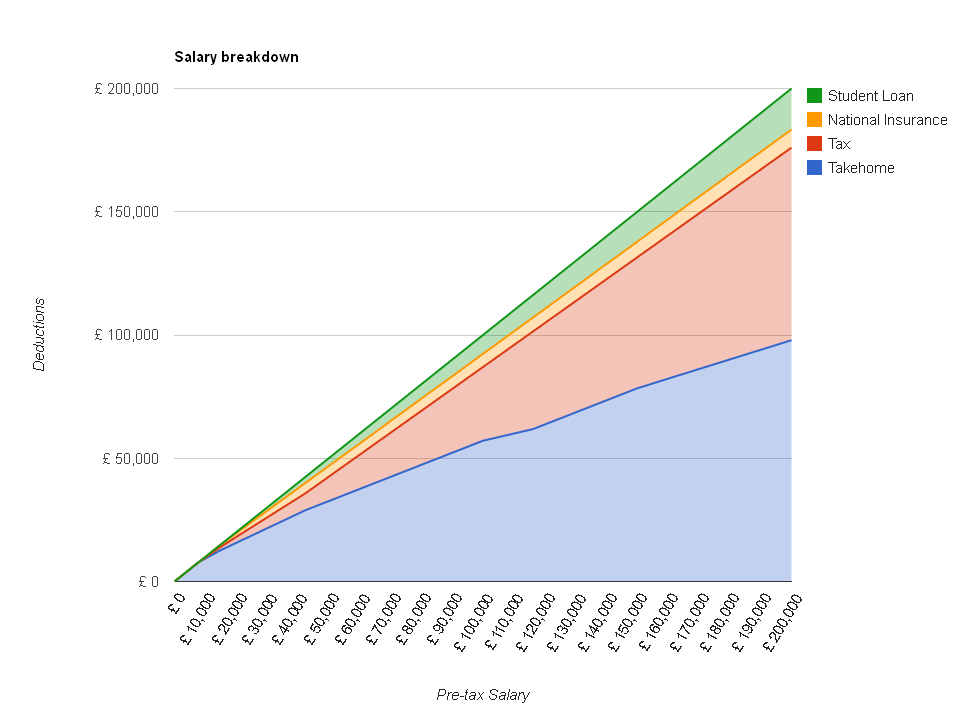Pay As You Earn
Budget 2012 update
Today, the Chancellor gave his annual budget speech in the House of Commons, outlining government spending plans for the next couple of years. The details of income tax and National Insurance from 6th April 2012 had already been provided, so as I have explained in a previous post, The Salary Calculator is up to date with the latest tax information.
However, the Chancellor took the opportunity to outline plans for income tax from April 2013, and there will be a few changes. Firstly, the under-65 tax free allowance will be increased from April 2013 to £9,205, in line with the coalition pledge to increase the tax-free personal allowance to £10,000 before the next election. This is an increase of £1,100 on the April 2012 value, saving those on low and middle incomes up to £220 per year. However, the increased personal allowances currently available to those over 65 will be frozen and, for those not yet receiving the increased allowances, replaced by a single allowance for all ages (although this change will not take immediate effect).
Another change in 2013 will be to reduce the top rate of income tax, paid by those earning over £150,000 per year, from 50% to 45%. The 50% rate was introduced by the Labour government, where previously such income would have been taxed at 40%. This will be popular with traditional Tory voters but Labour are complaining that the richest are getting tax cuts in this time of austerity.
The Salary Calculator will be updated with the April 2013 values nearer the time – in the meantime, you can see what the April 2012 changes will make to your pocket each month by checking The Salary Calculator 2012. There is also a comparison utility so you can easily see the difference between 2011 and 2012.
None of the content on this website, including blog posts, comments, or responses to user comments, is offered as financial advice. Figures used are for illustrative purposes only.
New – graphical representation of salary deductions
To help you to visualise where your income deductions are going, and how much of your money you get to keep (take-home pay), I thought I would add some pie charts to The Salary Calculator. Now, when you have entered your details and are viewing the table of results, there is an option to see a graphical representation of that information:
Click on this link, and an overlay will pop up, to show you an interactive pie chart that clearly explains where your money goes each year:
Of course, it will also show pension and student loan deductions if those apply to your calculations. To get started, head over to The Salary Calculator and enter your details. I hope you find this new tool useful – please use the comments section below to leave any feedback or suggestions for improvements.
Visualisation of salary deductions
Following the update of The Salary Calculator to April 2012 tax rates, I thought it might be interesting to see how the proportion of your salary eaten up by income tax and National Insurance changes as you earn more money. If you earn less than £8,105 you pay no tax and less than £7,605 you pay no National Insurance. But those earning more than £150,000 per year will be losing nearly half their income to the tax man. I created the following chart showing how your take-home pay increases as your salary increases from £0 to £200,000:
Take home is in blue – the red section on top is the tax you pay, and the yellow section on top of that is National Insurance. For those of you paying off your student loan, here is a version with those deductions on top, in green:
So you can see that as your salary goes up, your take-home pay (the blue line) always increases… but the higher your salary is, the slower your take-home pay increases with each pay rise, as more of it is going to the government.
April 2012 Update
The Salary Calculator has been updated with the latest tax information which takes effect from 6th April 2012.
This year, the standard personal allowance (the amount you are allowed to earn each year tax-free) has been increased from £7,475 to £8,105 which will mean that most of us will pay less tax. However, for higher earners, the threshold of taxable income for the 40% tax rate has been lowered from £35,000 to £34,370 – which will reduce the improvement from the increased personal allowance (although you should still be better off!). The National Insurance thresholds have also increased slightly, which all goes towards helping you bring more money home each month.
For those paying into pension schemes through their employer there is a change which may affect the amount of National Insurance you pay. Firstly, the NI rebate on “contracted-out” salary related schemes has reduced from 1.6% to 1.4% – which will mean you pay a little more National Insurance than in 2011. However, those paying into a money-purchase pension scheme will find that from April 2012 this is no longer considered “contracted-out”, so you will get no rebate at all. You can see what a difference this will make by un-ticking the “Contracted out” option on The Salary Calculator. More information is available in this goverment document explaining the change [PDF].
Head over to The Salary Calculator to see what a difference this will make to your pay packet next month – there’s even a comparison utility which shows a breakdown of the difference between 2011 and 2012.
You can read more about the April 2012 tax and NI rates on The Salary Calculator’s about page, or these useful pages from HMRC:
Raising the personal allowance
The personal allowance is the amount of money you are allowed to earn each year before you start paying income tax. As mentioned in a recent BBC article, Nick Clegg and the Liberal Democrats made an election pledge to raise the personal allowance to £10,000 (at the time of the election, the personal allowance was £6,475). As part of the coalition government the Conservatives and the Lib Dems agreed to make this increase before 2015, and last year the threshold was increased by £1,000 to £7,475 – although, as I reported at the time, the threshold for 40% tax was lowered at the same time so that those earning more would start paying 40% tax sooner.
This April, the standard allowance for the under-65s is set to increase again, this time to £8,105. This is less of an increase than last year (a change only of £630) but it will still make a significant difference to those on lower incomes. Nick Clegg is pushing for the threshold to be raised quicker than that, but the Conservatives are resisting it for now – the main reason for this being that the lost tax would have to be paid for elsewhere. This could mean either increasing other taxes or making further cuts.
The personal allowance is affected by your tax code, which means you may not receive the standard tax-free amount. More information about tax codes in this blog post.
The Salary Calculator will be updated in early Spring with the tax thresholds and rates for April 2012.
Categories
Tags
-
50% tax
2022
April 2010
April 2011
April 2012
budget
coronavirus
cost of living crisis
covid-19
debt
dollar
economics
Economy
election
Employed and Self Employed
Foreign Currency
foreign exchange rates
HMRC
holiday
holiday money
house prices
houses
income tax
interest rates
Jobs
Loans
Mortgages
national insurance
Pay As You Earn
pension
Pensions
personal allowance
pound
recession
recovery
savings
Self Assessment
self employed
self employment
student loans
tax rates
The Salary Calculator
unemployment
us
VAT
Sponsored Links
Archive
- May 2025
- April 2025
- March 2025
- November 2023
- September 2023
- August 2023
- July 2023
- June 2023
- May 2023
- April 2023
- March 2023
- February 2023
- January 2023
- December 2022
- November 2022
- October 2022
- September 2022
- August 2022
- July 2022
- June 2022
- May 2022
- April 2022
- March 2022
- February 2022
- January 2022
- December 2021
- November 2021
- October 2021
- September 2021
- August 2021
- July 2021
- June 2021
- May 2021
- April 2021
- February 2021
- January 2021
- December 2020
- November 2020
- October 2020
- September 2020
- August 2020
- July 2020
- June 2020
- May 2020
- April 2020
- March 2020
- February 2020
- November 2019
- September 2019
- April 2019
- March 2019
- December 2018
- April 2018
- March 2018
- January 2018
- May 2017
- March 2017
- February 2017
- September 2016
- June 2016
- March 2016
- February 2016
- January 2016
- June 2015
- April 2015
- March 2015
- February 2015
- January 2015
- November 2014
- October 2014
- July 2014
- June 2014
- May 2014
- March 2014
- February 2014
- January 2014
- November 2013
- October 2013
- August 2013
- July 2013
- June 2013
- May 2013
- April 2013
- March 2013
- February 2013
- January 2013
- December 2012
- November 2012
- October 2012
- September 2012
- August 2012
- July 2012
- June 2012
- May 2012
- April 2012
- March 2012
- February 2012
- January 2012
- December 2011
- October 2011
- May 2011
- April 2011
- March 2011
- January 2011
- December 2010
- August 2010
- July 2010
- June 2010
- May 2010
- April 2010
- March 2010
- February 2010
- January 2010
- December 2009
- November 2009
- October 2009
- September 2009
- August 2009
- July 2009
- June 2009



